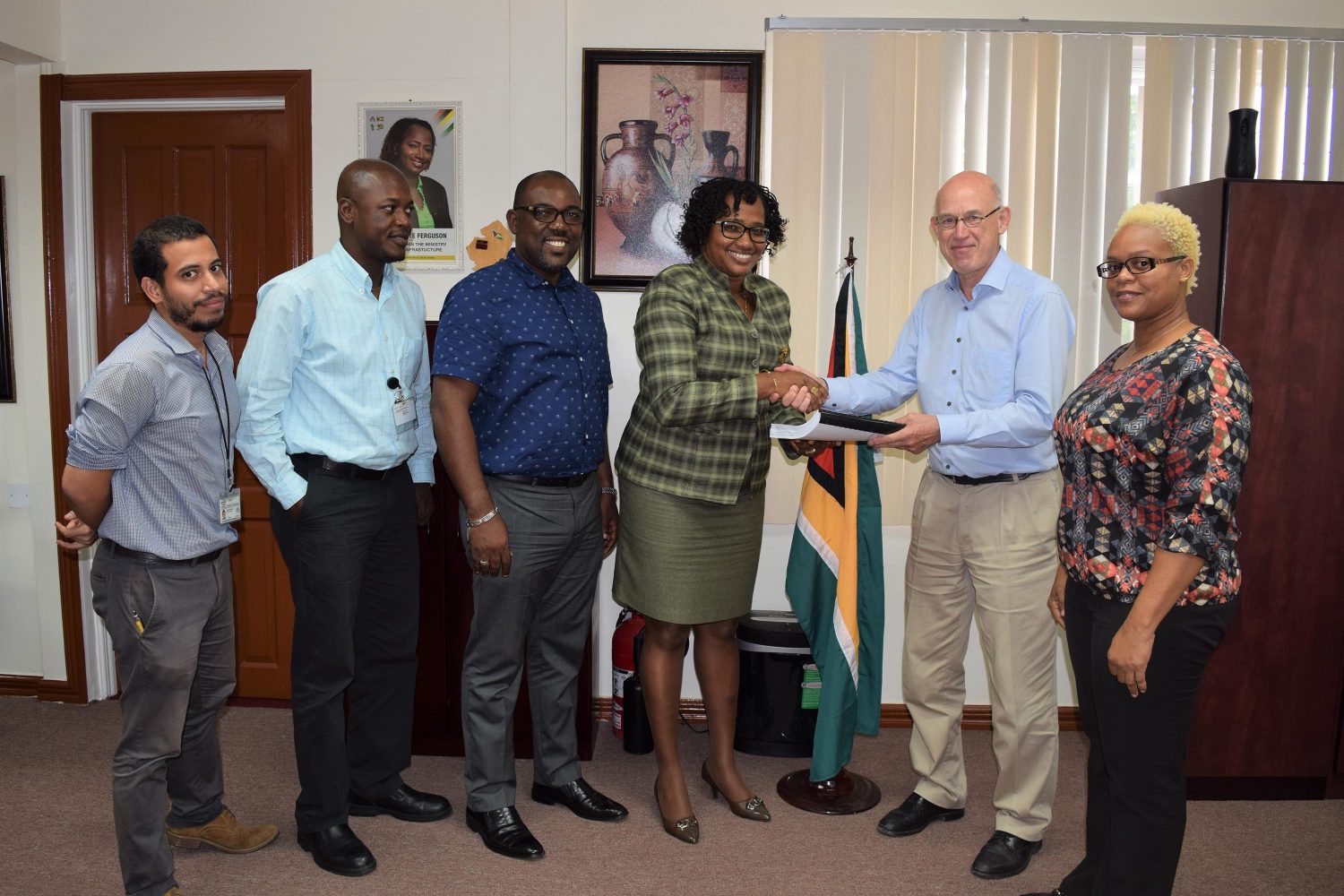The Feasibility Study and Design for the new Demerara River Bridge has been completed and it confirms that the proposed location of Houston to Versailles was the best option.
The Ministry of Public Infrastructure said that a copy was yesterday afternoon handed over to Minister within the Ministry of Public Infrastructure, Annette Ferguson.
The 57-page final report was presented by the project team, which includes Demerara Harbour Bridge Corporation General Manager and Project Manager, Rawlston Adams, Chief Transport and Planning Officer, Patrick Thompson, and Team Leader of the consulting company, LievenseCSO, Arie Mol.
During the document’s handing over, MPI said that its main conclusions were highlighted. It was affirmed that the proposed location of Houston-Versailles was the most ideal. It was further noted that the bridge should be a low-level one with a movable part and three-lanes. This structure, the study said, provided the most socio-economic benefits for Guyana and led to the lowest urban environmental impact. It was recommended in the study that alternative transportation routes be encouraged to lend to the longevity of the new bridge.
The completion of the feasibility study clears the way for the pre-qualification of contractors for the construction of the bridge. This process has already started and will conclude on October 17.
Both Adams of DHBC and Thompson of MPI noted the preparations that were undertaken during the feasibility stage to ensure the successful completion of key components. Thompson said that during the preparation of the feasibility study, all possible stakeholders, including those from the private and public sectors and neighbourhood and regional democratic councils, were consulted. Adams added that the project team met with the Land and Surveys Department yesterday for advice on surveying and the acquisition of land. The team also met with the Environmental Protection Agency yesterday on proceeding with the necessary environmental study.
Thompson added that challenges, such as land acquisition, will have to be faced but he said that the team is up to it.





